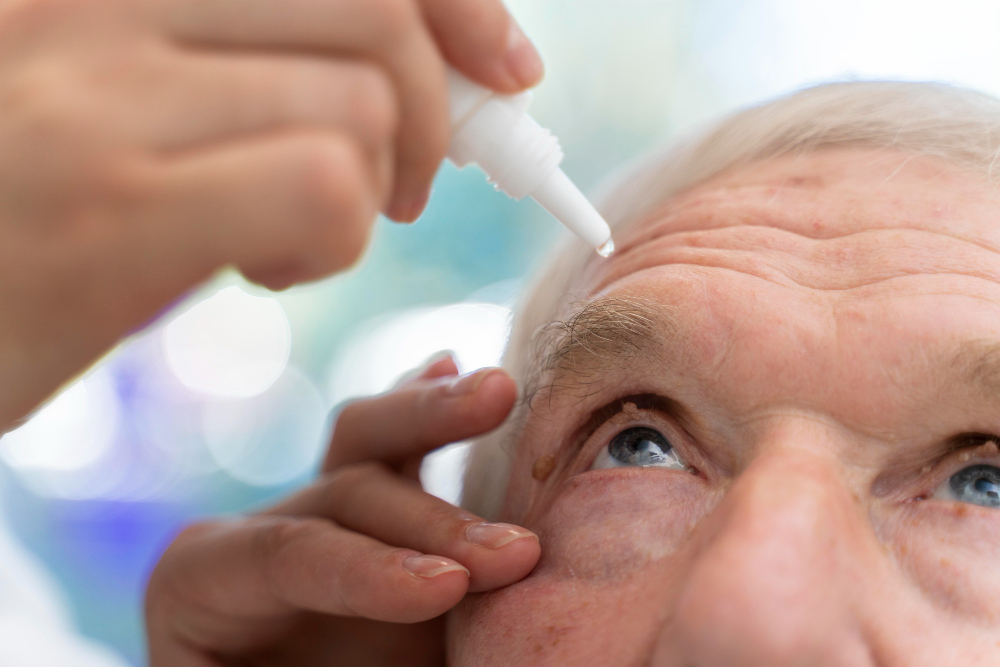Cataract is a clouding of the eye's natural lens, which lies behind the iris and the pupil. This cloudiness blocks light from passing through the lens clearly, which leads to blurry or dim vision. Cataracts develop gradually and can eventually interfere with daily activities, such as reading, driving, or recognizing faces. Cataracts are a common condition as people age, but they can also occur for other reasons.
Cataracts mostly occur due to aging, as the proteins in the eye's lens naturally start breaking down over time, causing it to become cloudy. However, cataracts can also develop earlier in life due to factors like injury, genetics, or certain health conditions.
Cataracts typically develop slowly and may not affect vision immediately. But as the cloudiness progresses, it becomes harder to see clearly, especially in low-light conditions.
What is the pathology of Cancer?
Cancer happens because of damage to the DNA in our cells. DNA is like an instruction manual that tells cells what to do. When the DNA is damaged, cells may stop following instructions, growing and dividing when they shouldn’t. Over time, these abnormal cells can grow and spread to other parts of the body.
Types of Cataracts
- Nuclear Cataracts: These affect the center of the lens and are most commonly age-related. They can cause yellowing or browning of vision.
- Cortical Cataracts: These form in the outer edge (cortex) of the lens and gradually extend toward the center. This type often causes glare and difficulty seeing at night.
- Posterior Subcapsular Cataracts: These develop at the back of the lens, often causing glare and blurred vision. They tend to progress more quickly than other types.
- Congenital Cataracts: Some people are born with cataracts or develop them during childhood, usually due to genetic factors, infections, or trauma.
Causes of Cataracts
- Aging: The natural aging process is the most common cause of cataracts.
- Genetics: Family history of cataracts can increase the likelihood of developing them.
- Diabetes: High blood sugar can damage the eye lens over time.
- UV Radiation: Long-term exposure to sunlight without eye protection can contribute to cataract development.
- Smoking and Alcohol: Both smoking and excessive alcohol use can increase the risk of cataracts.
- Eye Injury or Surgery: Trauma to the eye or past eye surgery can lead to cataracts.
- Certain Medications: Long-term use of corticosteroids can increase the risk.
Symptoms of Cataract
- Blurred or cloudy vision: The most common symptom, as if looking through a foggy window.
- Sensitivity to light and glare: Bright lights or sunlight can be uncomfortable.
- Poor night vision: Cataracts can make it harder to see in low-light conditions.
- Double vision in one eye: Some people experience "ghost" images in one eye.
- Colors look faded: Colors may appear less vibrant or yellowed.
- Frequent changes in prescription: The need for stronger glasses may increase as cataracts progress.
Ayurvedic perspective:
A cataract, known in Ayurveda as Timira or Kacha or Linganasha is seen as a disorder that leads to cloudiness or opacity in the eye’s lens, resulting in impaired vision. Ayurveda attributes cataracts mainly to imbalances in the Vata and Pitta doshas.
- Vata dosha (air and space elements) governs movement and neurological functions. When Vata is aggravated, it causes degeneration in the eye’s lens, leading to dryness and cloudiness.
- Pitta dosha (fire and water elements) is associated with heat and metabolism in the body. Excessive Pitta in the eyes can result in inflammation, heat, and cloudiness, contributing to cataract formation.
Ayurvedic Treatment for Cataract
Eye Care Practices:
- Netra Tarpana: This Ayurvedic therapy involves applying medicated ghee to the eyes, which nourishes the eye tissues, reduces dryness, and may slow cataract progression.
- Nasyam (Nasal Drops): Ayurvedic nasal drops using medicated oils can clear the head channels and support eye health.
Detoxification (Panchakarma):
- Virechana (Purgation Therapy): This helps to clear excess Pitta from the body.
- Netra Basti: An Ayurvedic treatment in which ghee is poured over the eyes to nourish and rejuvenate the lens.
Diet and Lifestyle:
Include foods that are cooling and nourishing, such as ghee, milk, and leafy greens.
Avoid spicy, oily, and fried foods, as they aggravate Pitta and increase inflammation in the body.
Protect the eyes from excessive sunlight exposure to prevent Pitta aggravation.
Herbs and Medicines:
Triphala and Amla
Triphala and Amla are again recommended to detoxify the body and strengthen the eyes.
Use: Often taken as Chyawanprash (an Ayurvedic herbal jam) or as powder, tablets, or juice.
Saptamrit Lauh
An Ayurvedic preparation with Triphala, honey, and iron that is used to nourish and strengthen the eyes.
Mahatriphala Ghrita
A medicated ghee with Triphala and other herbs beneficial for eye health.






